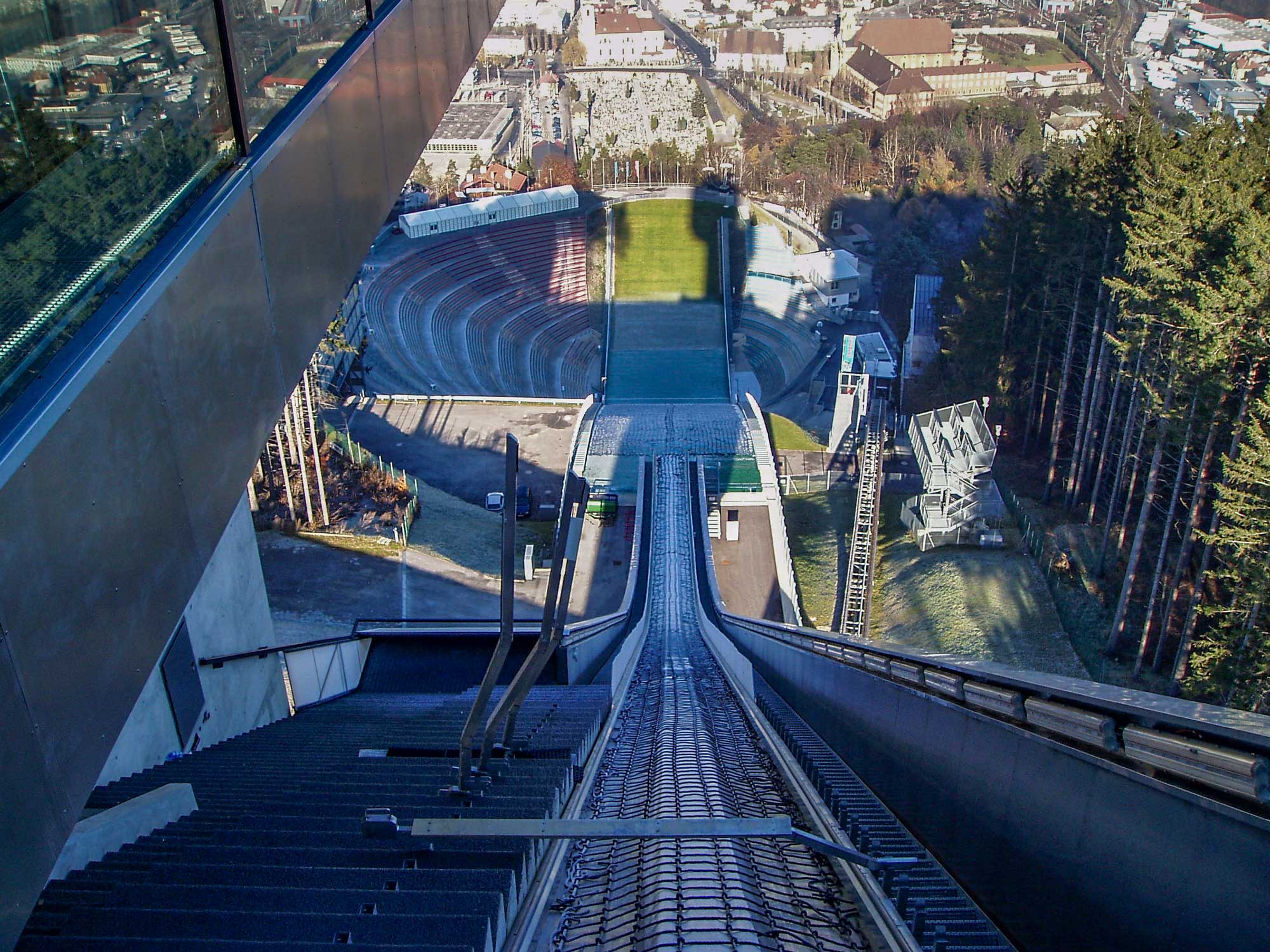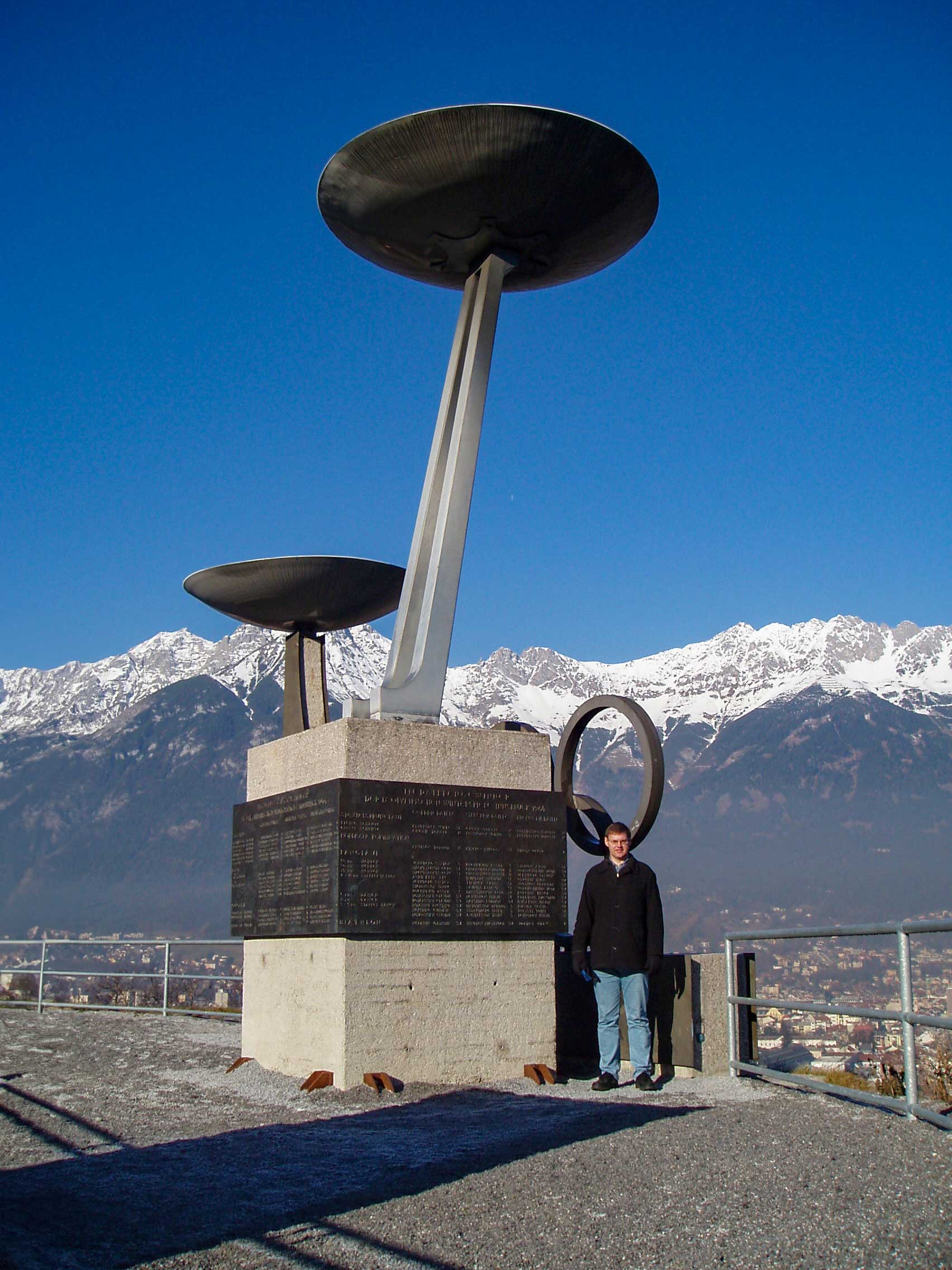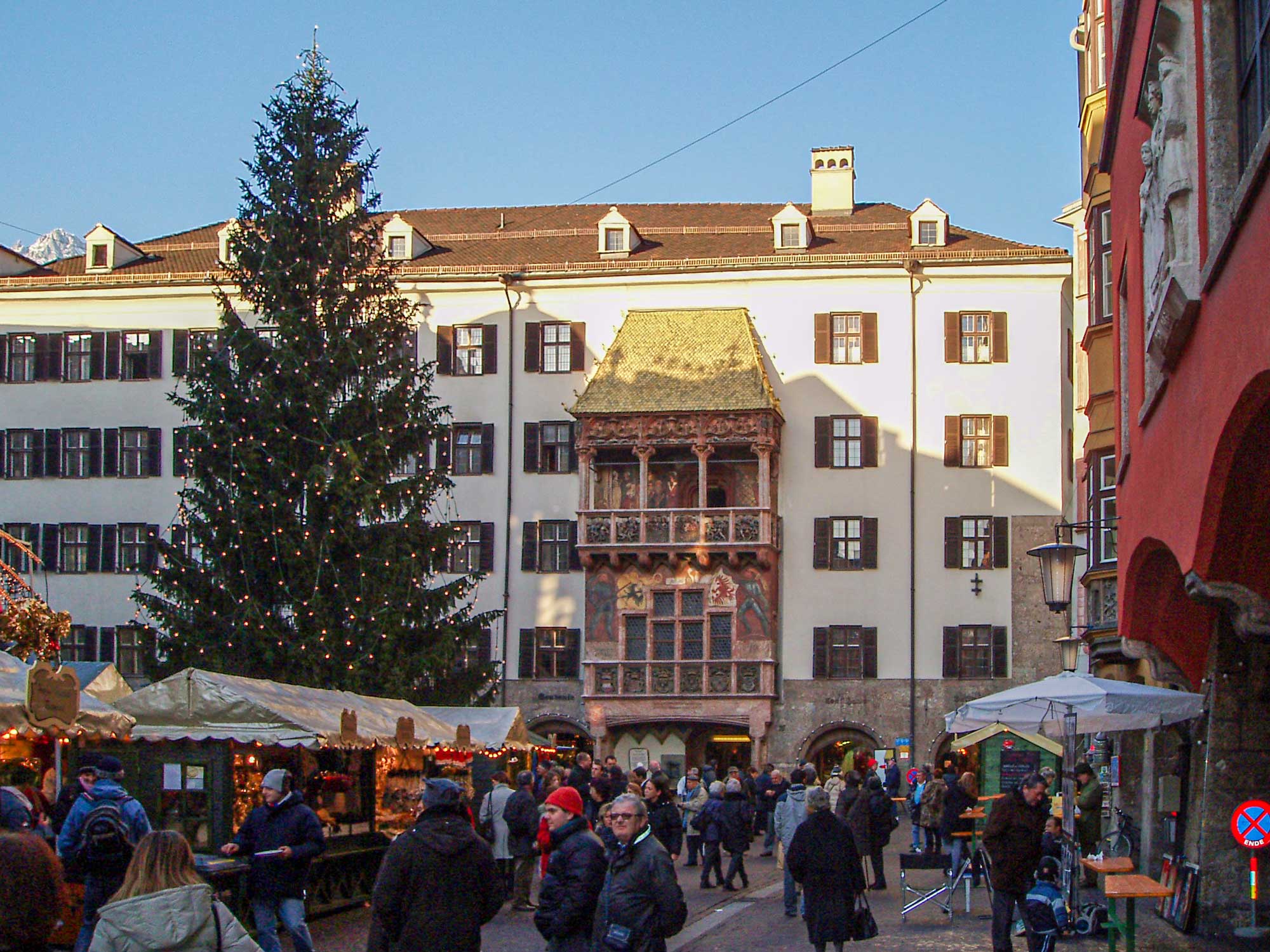Austria - Innsbruck
In early December 2005 we drove to Innsbruck in Austria whilst staying in Munich, Germany.
Being a ski-resort, there are inevitably wonderful views as you can see here.
The first documented mention of Innsbruck dates back to 1187 ("Insprucke"). It served as an important crossing point over the river Inn. The city's seal and coat of arms show a bird's-eye view of the Inn bridge, a design used since 1267. The route over the Brenner Pass was then a major transport and communications link between the north and the south, and the easiest route across the Alps. The revenues generated by serving as a transit station caused the city to flourish.
Innsbruck became the capital of all Tyrol in 1429 and later in 15th century the city became a centre of European politics and culture as emperor Maximilian I moved the imperial court to Innsbruck in the 1490s.
During the Napoleonic wars Tyrol was ceded to Bavaria, ally of France. Andreas Hofer led a Tyrolean peasant army in the victory on the Berg Isel against combined Bavarian and French forces, proceeded to make Innsbruck the centre of his administration. The combined army later overran the Tyrolean militia army and Innsbruck was until 1814 part of Bavaria. After the Vienna Congress Austrian rule returned. The Tyrolean hero Andreas Hofer was executed in Mantua and his remains were returned to Innsbruck in 1823 and interred in the Franciscan church.

I'd been to see the ski-jump in Innsbruck in 1991 and now wanted to relive these memories with Pat.
Of course, I would love to have gone down the jump, but the lack of snow prohibited this!!
The Bergisel Ramp was built of concrete for the 1964 Winter Olympics to replace an older, smaller ramp. It was also used for the 1976 Winter Olympics. A new ramp was opened in 2003, designed by the architect Zaha Hadid, as the old one no longer conformed to contemporary requirements of ski jumping.
Since 1952, Innsbruck has played host to one leg of the Four Hills Tournament (Vierschanzentournee) which is third only to the World Cup and the Winter Olympics as the most sought after title on the ski jumping world circuit.
One of the tournament's "specialities" is its controversial qualifying system. Unlike at the other ski jumping events where the best 30 competitors of the first series qualify into the second series, all four tournament's events follow the so called knock-out system, first introduced in the 1996/97 season. 50 first series competitors are divided into 25 pairs. All 25 winners of those internal "duels" plus five best "lucky losers" qualify into the second series. This way, it is theoretically possible that a competitor with the 12th first series result does not qualify into the second series (if he loses his internal duel, five lucky losers and winners of their duels have better results) while the one with the 49th first series result may still qualify (if his "rival" has the worst result).
Jens Weissflog (DDR/D) was the first ski jumper to have won the tournament four times. He won the tournament in 1984, 1985, 1991 and 1996. Janne Ahonen (Finland) equalled his success in 2006 with his own fourth win (1998/99, 2002/03, 2004/05 and 2005/06). The next in number of wins are Helmut Recknagel (DDR) and Bjørn Wirkola (Nor) with three titles each. Wirkolas victories was in three consecutive years (1967-69), a record still uncontested.
The fourth victory of Janne Ahonen in 2005/06 was also the first time the tournament victory was tied between two competitors, with Jakub Janda sharing the title by obtaining his first 4 Hills Tournament success.
Jens Weissflog and Bjørn Wirkola have both won ten individual competitions within the Four Hills Tournament. Matti Nykänen (FIN) and Janne Ahonen are next with 7 victories.
During the 50th edition of the tournament (2001/2002), Sven Hannawald was the first person to win all four competitions in a single year.

The Winter Olympics were held in Innsbruck in 1976.
The Olympics were actually awarded to the U.S. city of Denver, but the people of the state of Colorado voted to prohibit public funds from being used to support the Games. Innsbruck stepped in and hosted the Games only 12 years after its last Olympics. Rosi Mittermaier won two of the three Alpine skiing events and almost became the first woman to sweep all three events. But in the final race, Kathy Kreiner beat her by 12 hundredths of a second. The ice hockey team from the USSR won its fourth straight gold medal. A new figure skating event, ice dancing, was added to the programme and, like the pairs, it was dominated by Russian couples. The most memorable image of the Games was Franz Klammer flying wildly down the downhill course, barely keeping control, on his way to a gold medal.
For the first time in the Olympic Winter Games two Olympic Flames were lit: The twin Olympic Cauldrons celebrated not only the present games but also the previous time they where held in Innsbruck, 1964.

Amidst the charming Old Town, a classic Austrian hybrid of Gothic and Baroque, you will find Innsbruck's greatest tourist attraction and certainly its most characteristic landmark: The Golden Roof.
Innsbruck's Old Town is a small area of sturdy medieval houses, many attractively painted in pastel colors and supported by sloping earthquake buttresses. The main thoroughfare of the Old Town is the broad strip of Herzog-Friedrich-Strasse, which eventually opens out into a central plaza lined with arcades. Beyond, a labyrinth of alleyways invites aimless strolling.
The Golden Roof was built by Archduke Friedrich IV in the early 15th century as the residence of the Tirolean sovereigns. The Golden Roof actually is the three-story balcony on the central plaza at the heart of the Old Town. The late Gothic oriels are capped with 2,738 gold-plated copper tiles. It was constructed for Emperor Maximilian I to serve as a royal box where he could sit in luxury and enjoy tournaments in the square below.
Completed at the dawn of the 16th century, the Golden Roof was built in honor of Maximilian's second marriage, to Bianca Maria Sforza of Milan (Maximilian was a ruler who expanded his territory through marriage, not conquest). Not wishing to alienate the allies gained by his first marriage, to Maria of Burgundy, he had an image of himself between the two women painted on his balcony. The balustrade on the first floor is adorned with carved coats of arms, representing Austria, Hungary, the double-headed eagle of the Empire, Burgundy and Milan, as well as Tirol and Styria. The mural paintings show two standard-bearers with the flags of the Empire and the Province of Tirol.
